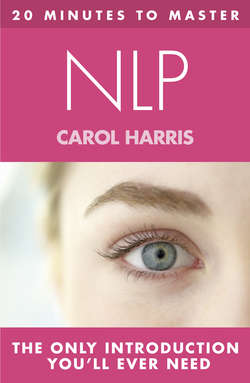Читать книгу 20 MINUTES TO MASTER ... NLP - Carol Harris - Страница 22
FEELINGS
ОглавлениеNLP was largely founded on the activities of therapists and it has continued to emphasize the importance of a balanced emotional state in achieving effective performance. It has techniques for managing emotions, many of them involving the sensory shifts referred to in the previous section. Emotional responses are often brought about by thoughts and are certainly closely linked to them, so by changing thought patterns it is often easy to change emotional responses.
Another way in which NLP engages the emotions is through its association with behaviour. Because there is a close link between body and mind, by making changes in the body, changes in the mind – and thereby the emotions – often follow. An example of this is posture. Most people have habitual postures associated with different emotional states, for example being more upright when energetic and taking up less space when apprehensive. By changing posture it is possible to change the thoughts and feelings which follow. So, to get someone to feel more energetic, it is possible to identify their personal posture for energy and then help them re-create it; once they have done so, they are more likely to feel energetic. The same goes for states such as calmness, relaxation, motivation, enthusiasm and so forth – certain postures are more likely to produce each of these states in a given person.
